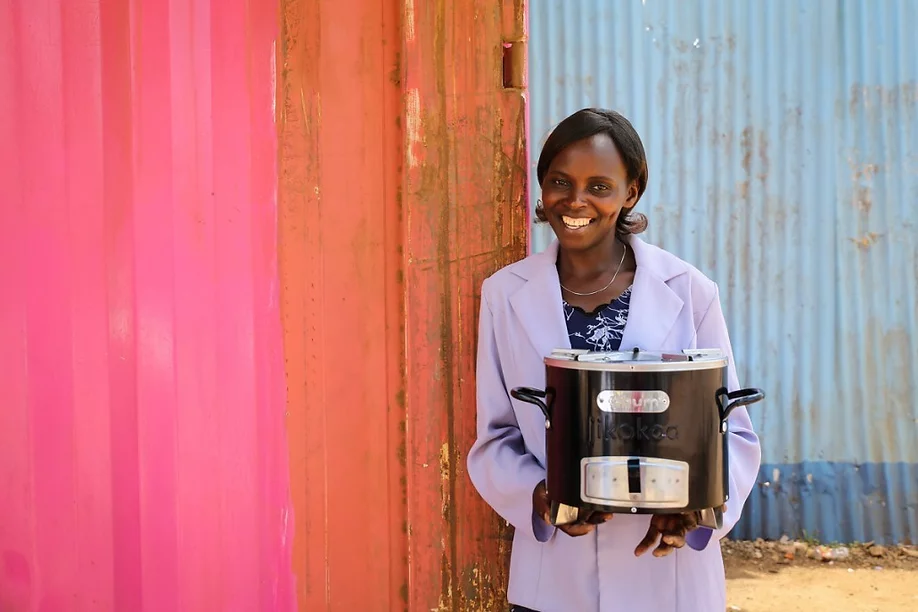Tech & Services
Biodiesel
Biodiesel is an alternative renewable fuel that can be made from amongst others, vegetable oils in a chemical process called transesterification, which involves a reaction with methanol, in the presence of a catalyst (usually sodium hydroxide [NaOH] or potassium hydroxide [KOH]), which also results in a bi-product glycerine or glycerol. In the frying process, the vegetable oil undergoes several reactions which leads to the formation of undesirable compounds such as polymers and free fatty acids, among others. Hence, the proper utilisation of such oils is important because of their disposal problems and negative impacts on the environment.
Biodiesel has substantially different properties and results in better engine performance. Biodiesel is most commonly used as a blend with petroleum diesel fuel. Most manufacturers of diesel vehicles and engines have approved the use of B5 (a blend containing 5% biodiesel and 95% petroleum diesel), and some export countries approve the use of blends up to B20 (20% biodiesel and 80% petroleum diesel) or higher. To ensure good performance in engines, biodiesel must meet quality specifications developed by the EU and SANS. Blends up to B5 may be found in conventional diesel fuel without additional labelling at the pump.
Pyrolysis
Pyrolysis is a thermochemical decomposition of organic material at elevated temperatures in the absence of oxygen (or any halogen). It involves the simultaneous change of chemical composition and physical phase, and is irreversible. The word is coined from the Greek-derived elements pyro “fire” and lysis “separating”.
The pyrolysis method for recycling used tyre is a technique which heats whole or shredded tires in a reactor vessel containing an oxygen free atmosphere and a heat source. In the reactor the rubber is softened after which the rubber polymers continuously break down into smaller molecules. These smaller molecules eventually vaporize and exit from the reactor. These vapours can be burned directly to produce power or condensed into an oily type liquid, generally used as a fuel. Some molecules are too small to condense. They remain as a gas which can be burned as fuel. The minerals that were part of the tire, about 40% by weight, are removed as a solid. When performed well a tyre pyrolysis process is a very clean operation and has nearly no emissions or waste.
Pyrolysis of scrap tyre can separate solids in the tire, such as steel wire and carbon black, from volatile liquid and gaseous compounds that can be used as fuel. Although the pyrolysis of waste tires has been widely developed throughout the world, there are legislative, economic, and marketing obstacles to widespread adoption
Pelletization
The pelletizing of Waste and Green Refuse is one of the essential ‘enabling first steps’ to beneficiate or recycle wastes for further use. The latter is one of iLive‘s recent projects. In this project iLive conducted successful technology trials on green waste pelletization supplied by municipal solid waste, mainly garden waste.
Densification via pelletizing technologies allows biomass to be used, handled and transported economically as a feedstock for biomass-to-energy supply chains. Biomass pellets could be used to substitute coal at power stations (to produce green electricity), Coal-to-Liquid plants (to produce biofuels) or fuel wood-fired cooking stoves for domestic use. The next project’s aim is to divert around 120,000 tons of green waste per annum from landfills to a commercial pelletizing facility.
Pretreatment is the first crucial step to modifying the structure of wood via physical, chemical, and biological treatment for cost-effective and sustainable fuels and chemical production.
Different pretreatments would be selected to upgrade the characteristics of wood with respect to different applications and process efficiencies. High-temperature pretreatment (e.g., torrefaction) at the temperature range greater than 250 °C led to higher degradation rate of sugars and extractives, which is not preferable for fuel and chemicals production from lignocellulosic biomass. Instead, high-temperature pretreatment was used to upgrade the solid fuel for thermochemical conversion (e.g., combustion and gasification).
It can remove the moisture and volatiles with a low-heating value of the native biomass, which favors for the ease of fuel combustion compared to the raw wood. In addition, it can increase the hydrophobicity of the biomass which improves their handling and storage performance.
In this chapter, the production chain of the wood pellet production with incorporating recent novel pretreatment technologies (torrefaction, steam explosion, and hydrothermal carbonization) were discussed. The resulted pellets are a uniform feedstock for producing chemicals, heat, and energy via biochemical and thermochemical conversion, respectively.
Clean Cooking Stove
The WHO estimates that breathing the smoke from traditional cooking stoves and open fires caused nearly 2 million premature deaths worldwide in 2004. Smoke exposure is a contributor to diseases and conditions which include pneumonia, chronic respiratory disease, heart disease, low birth weight, and probably tuberculosis and other diseases. Biomass pellet stoves are a low-cost cooking option while radically improving the health conditions of households. iLive estimates that the green wastes in the Johannesburg metro alone could cater to cleaner, more affordable, and healthier cooking condition to more than 200,000 households per annum.

